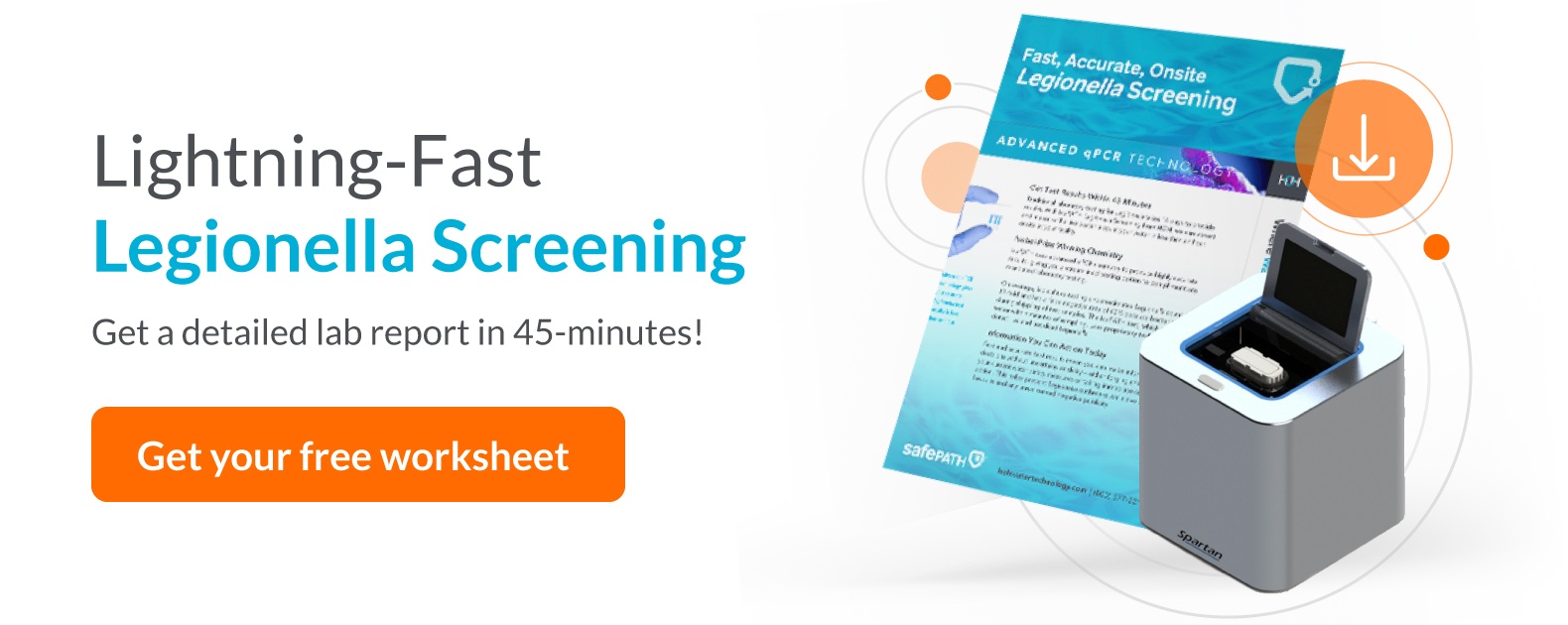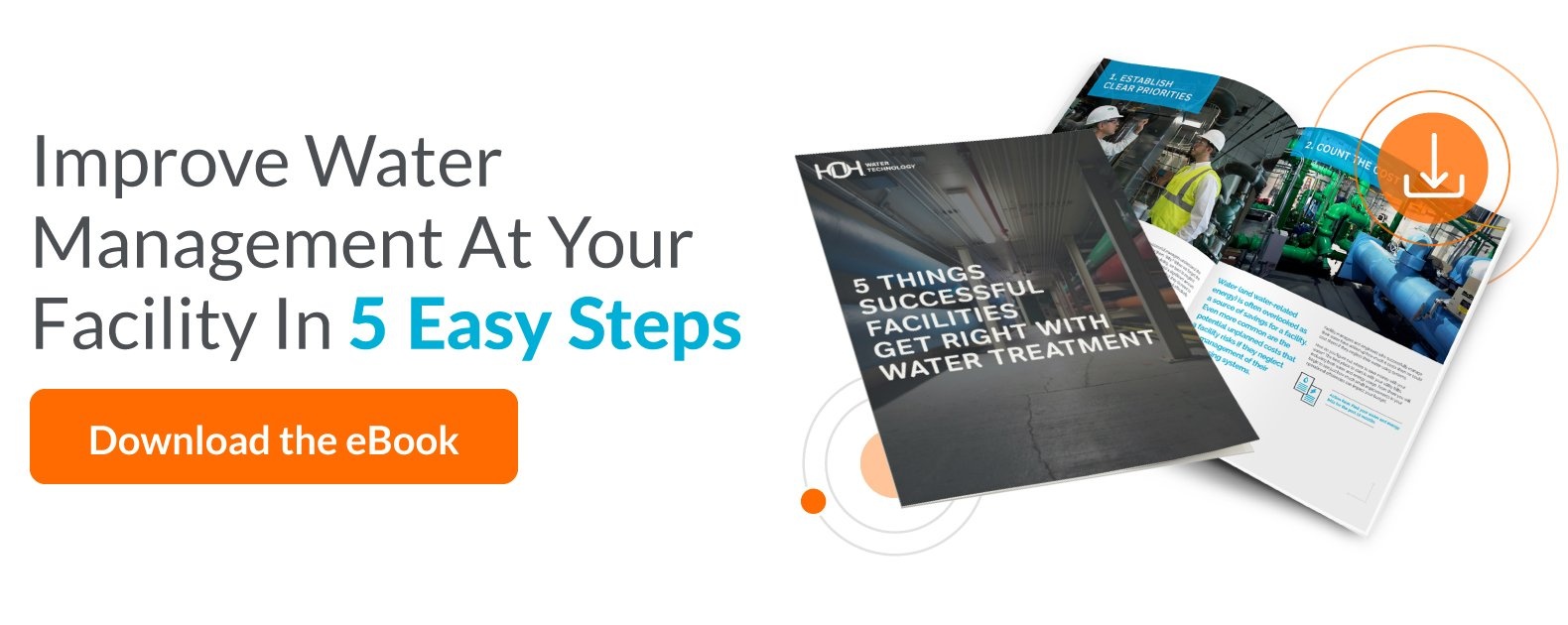
 You may already know the basics about Legionella: it causes a serious, potentially fatal illness known as Legionnaires’ disease. And, contaminated building water systems are responsible for most Legionnaires’ outbreaks.
You may already know the basics about Legionella: it causes a serious, potentially fatal illness known as Legionnaires’ disease. And, contaminated building water systems are responsible for most Legionnaires’ outbreaks.
But do you know the leading causes of Legionella growth inside and outside of your buildings or facilities?
Legionella has a sneaky ability to grow under a wide variety of circumstances. Even if you think your building’s cooling water system is clean and well-treated, you’ll see that even seemingly minor disruptions can quickly turn into a golden opportunity for Legionella to set up shop — and to spread at an alarming rate.
Things Inside Your Building That Can Cause Legionella Growth
Many things that happen inside your building can become a breeding ground for Legionella. These are the most common issues.
1. Water temperature variations
The ideal temperature for Legionella growth is a wide range of 77 to 108 degrees Fahrenheit. But, Legionella can grow in temperatures outside this range. Certain factors increase your risk of having Legionella-friendly temperatures. They include:
- Setting the water heater too low
- Long pipes that lose heat as the water moves along
- Hot and cold water pipes being too close together
- Places in a water system where hot and cold water may mix
- Stagnant water, which tends to lose heat
- Cold water pipes that are not protected from hot weather
2. Biofilm
This slimy buildup eats up disinfectant and provides an ideal environment for Legionella to grow. Biofilm can grow on any surface that is exposed to moisture continuously. It doesn’t leave without a fight: biofilm can stay on surfaces and in water systems for years and even decades.
3. Scale
When minerals from the water collect inside your water system, you get a hard, rock-like buildup known as scale. Scale forms a barrier that interferes with your efforts to heat or cool the water, which can lead to unpredictable and/or unacceptable water temperatures. Scale provides a cozy home for Legionella and other germs to proliferate.
4. Sediment
Sediment is a collection of minerals and natural materials. It builds up in water that isn’t properly treated or filtered and compromises heating and cooling systems. Sediment brings germs with it that are hard to get rid of, and invites more germs, including Legionella, to grow in its protected environment.
5. Water pressure changes
If water pressure inside your building is affected for any reason, it may dislodge biofilm and introduces its germs into the rest of the water system.
6. pH
Disinfectants can only do their job if the water’s pH is between 6.5 and 8.5. The pH level may change because of pollution, chemicals, and the amount of plant or organic material in water.
7. Not enough disinfectant
While you may think you’re using adequate amounts of disinfectant, certain processes can actually use up your germ-killing powers quickly, leaving your water system vulnerable to Legionella. Heating, storing, and filtering water can all be disinfectant-hogs.
8. Stagnation
Standing water encourages biofilm to grow and soaks up more than its fair share of disinfectant. Stagnation can happen when certain fixtures go unused or water usage, in general, is decreased. Dead legs, which are pipes that have low or no flow, are a prime place for Legionella to grow.
Things Outside Your Building That Can Cause Legionella Growth
Things that happen outside of your building can be the start of a Legionella outbreak inside.
9. Construction
Vibrations can dislodge biofilm and scale — and the Legionella living in it — into your water.
10. Water main breaks
A water main break can cause a sudden change in water pressure, which can knock any biofilm out of its place. In addition, a water main break often results in extra dirt or unwanted matter in the water. When these extra contaminants show up, they use up the disinfectant supply and further compromise your water.
11. Municipal water supply
Changes in the municipal water supply can increase sediment, affect disinfectant levels, and cause undesirable changes to pH. All of these factors affect how you fight Legionella in your building.
Stopping Legionella before it starts
Unfortunately, some of these factors are out of your control. However, having a solid water management program in place can help you proactively address these issues before Legionella grows in your building’s water system.
Recent Blog Posts

Five Ways to Increase the Efficiency of Your Closed Loop System

Global 6K for Water



